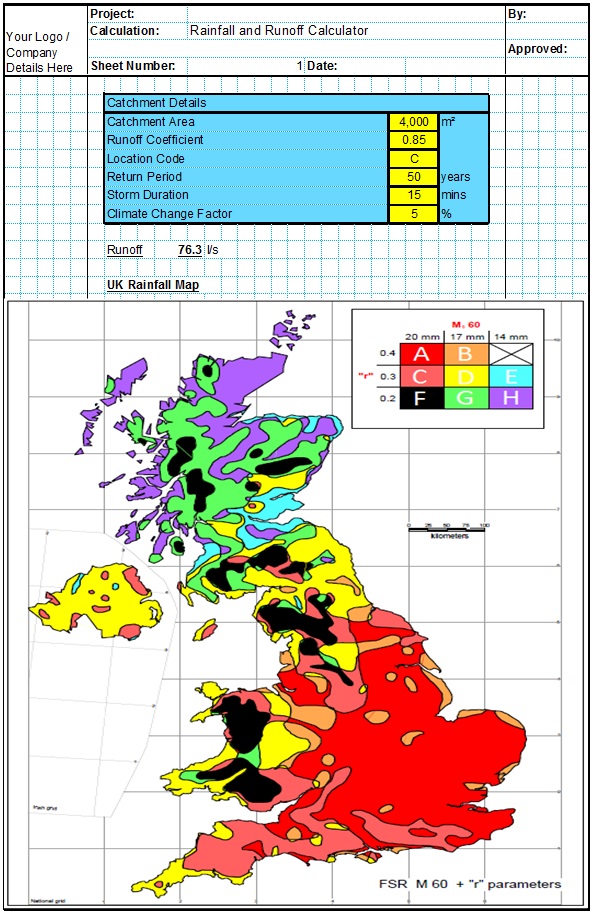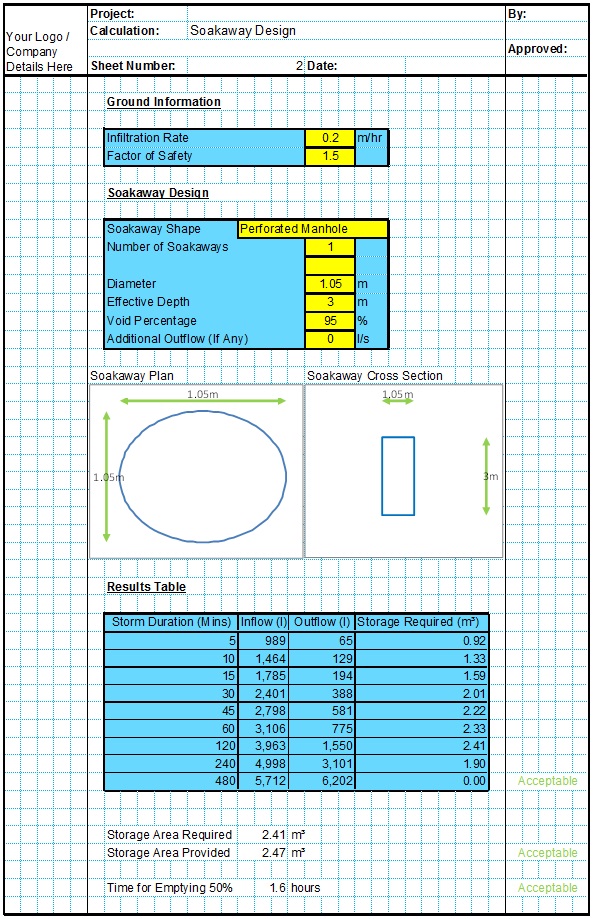The Bransby Williams Formula was developed to calculate the time of concentration from studies done in India. It is better suited to small rural catchments without well-defined drainage channels, ie where overland flow is the dominant factor. As such it is often compared with the kinematic wave equation for overland runoff.
Bransby Williams Formula Calculation

Catchment Area (A) (m2)
The area of the catchment being considered.
Average Slope (H) (m/100m)
This is the average slope of the catchment, measured along the line of the natural flow from the summit of the catchment to the point being considered.
Distance (L) (m)
This is the distance on plan, measured along the line of the natural flow between the catchment summit and the point being considered.
Applications & Calculation Spreadsheet
Similar to the Kirpich Equation or Kerby Equation, the Bransby Williams formula can tend to underestimate the Time of Concentration leading to conservative high design rainfall intensities. Where well-defined channels are present, it is recommended that the Time of Concentration of these channels is calculated separately then added to the Time of Concentration of the remote sub-catchment calculated using the Bransby Williams equation.
The Bransby Williams Method is included in the CivilWeb Rainfall & Runoff Calculator package as it is still used in several design standards around the world, often in combination with a separate channel calculation such as Manning's Equation.
Related Spreadsheets from CivilWeb;
Runoff Calculator Spreadsheet
This spreadsheet calculates the design runoff flow for a site in accordance with the a number of different methods including the Wallingford Procedure.
Soakaway Design Spreadsheet
This spreadsheet calculates the requirements for a soakaway system and assists the user to design a suitable system.

